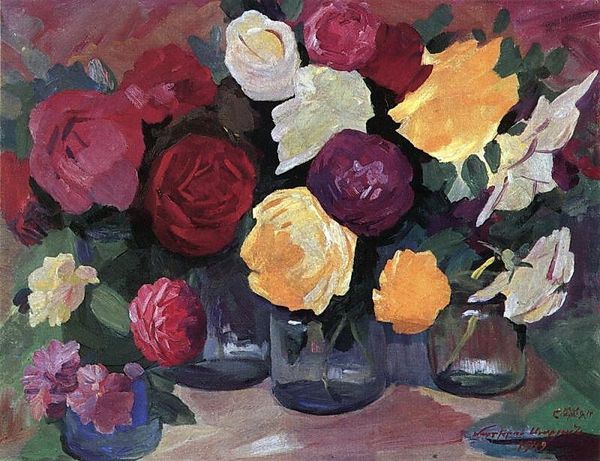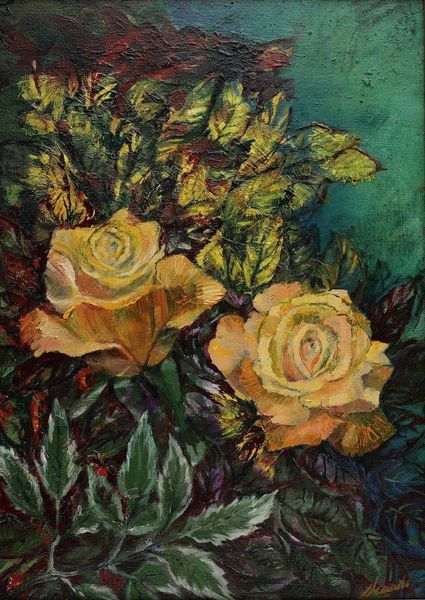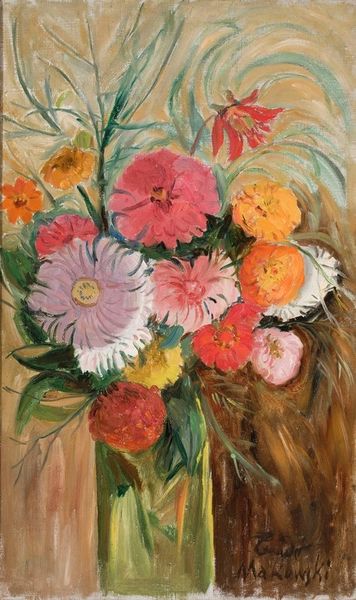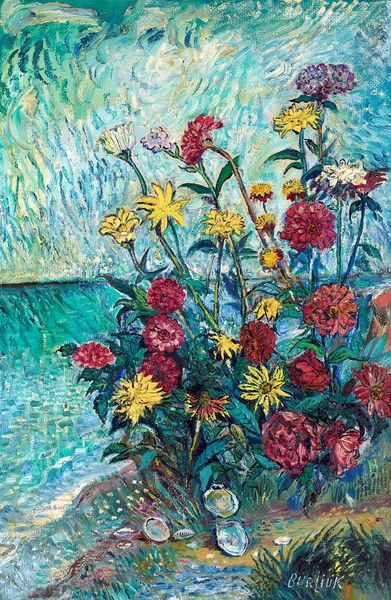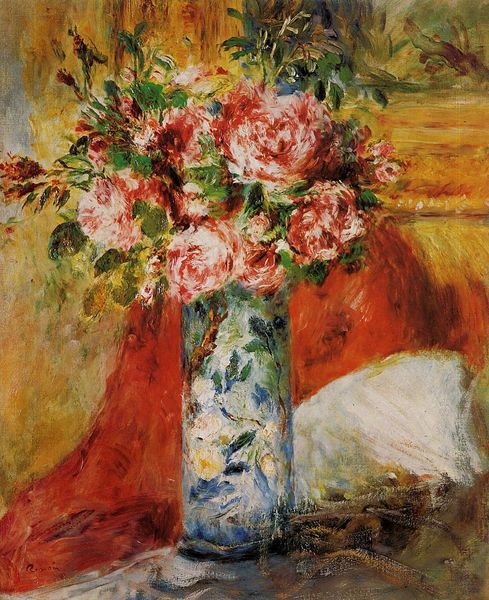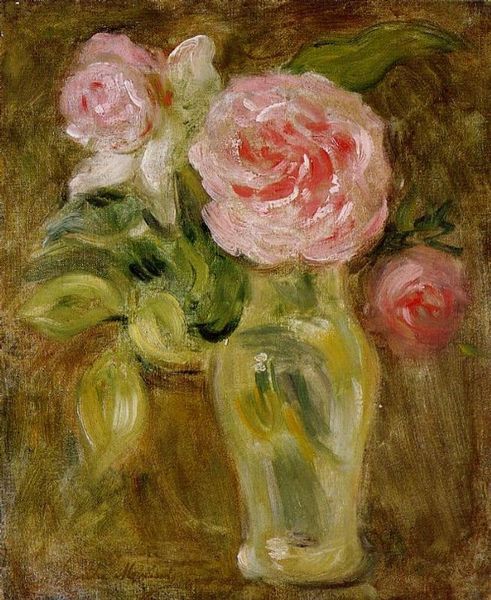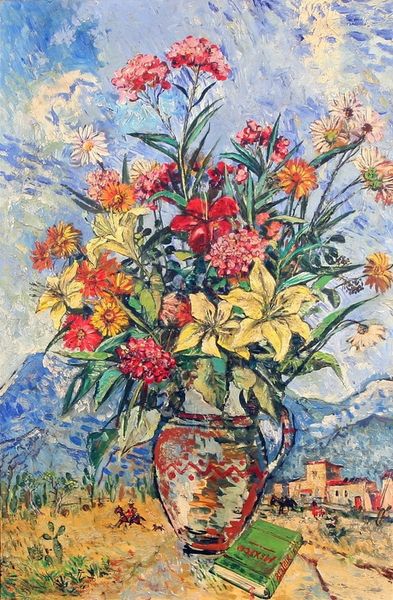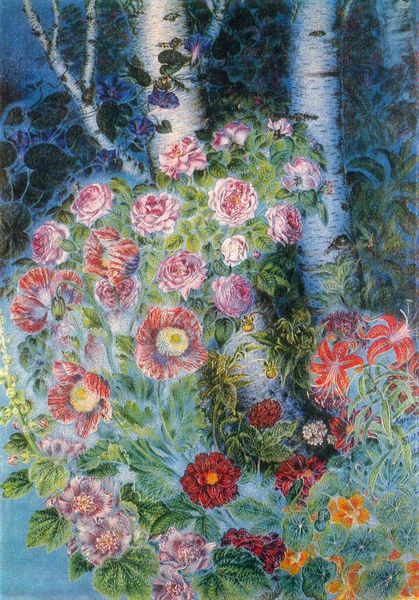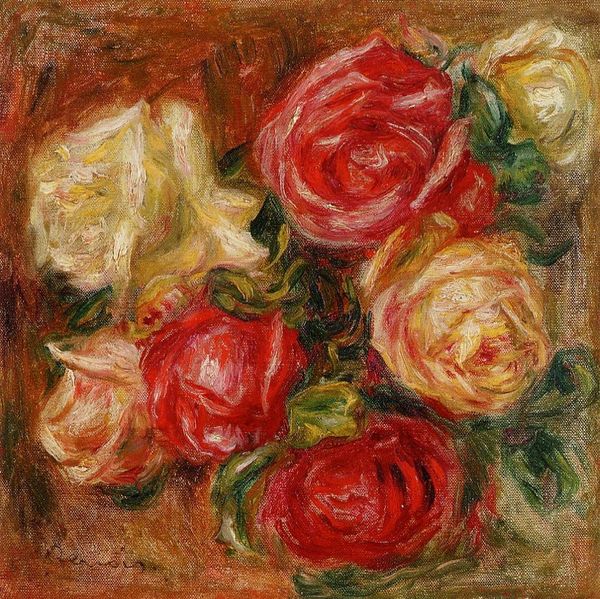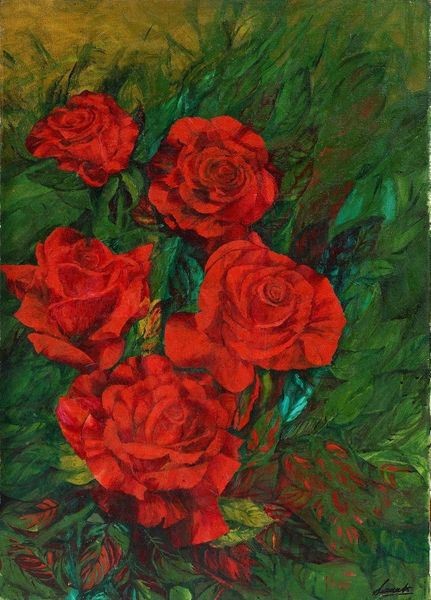
Copyright: David Burliuk,Fair Use
Curator: This painting, titled "Roses with blue background," was created by David Burliuk in 1960. Notice the vibrant impasto strokes of oil paint on display. What are your immediate thoughts? Editor: It feels overwhelmingly tactile, doesn’t it? The layering of the paint, the way it seems to stand away from the canvas—it gives a real sense of materiality and weight. Almost as if you could pick these roses. Curator: I agree, there’s a real vibrancy. And I think we need to see it within the frame of Burliuk’s overall interest in blending avant-garde approaches like Expressionism with his own distinctive visual language. These roses, for instance, while representational, become vehicles for exploring ideas around expression, color, and, arguably, the artist's own identity within the socio-political landscape. Editor: Absolutely, but consider the production of the piece, right down to the tools used, to how Burliuk mixed his colors. How might those aspects contribute to the overall effect? Curator: Interesting, by foregrounding these very practical processes you steer us towards broader questions about the artistic labor. The fact that the painting is rendered with such a visible, textured impasto reminds us of the artist’s hand, the physical act of applying paint to canvas. Editor: Precisely. The materials themselves—the pigments, the linseed oil, the canvas stretched and prepared—these aren’t neutral. Their sourcing, manufacture, and cost speak volumes. Even the accessibility of art supplies in the Soviet Union during that time could be relevant. Curator: True. Furthermore, think about the symbol of the rose itself, charged as it is with so much cultural baggage. Is Burliuk subverting or embracing these coded symbols? And does the artwork somehow negotiate ideas of queer identity or representation? Editor: I’d say the beauty in roses and, indeed, art exists in an interlinked relationship where roses depend on growers and paintings rely on raw material. What stays consistent are societal associations with wealth, display, and of course, taste. Curator: Well, by placing "Roses with blue background" within its complex historical context we can deepen our appreciation of it beyond mere visual pleasure. It allows for critical discourse. Editor: And focusing on the materials grounds it, makes it tangible, sparking that initial curiosity but enriching an artwork that is as fascinating as these topics of discussion themselves.
Comments
No comments
Be the first to comment and join the conversation on the ultimate creative platform.

